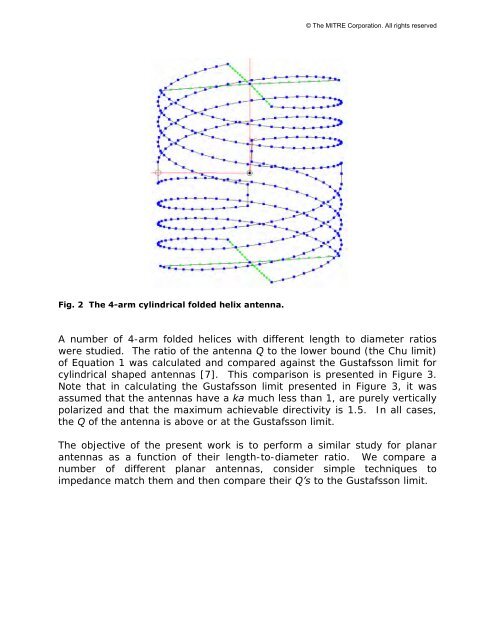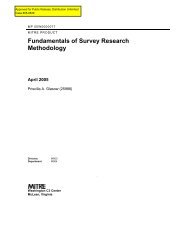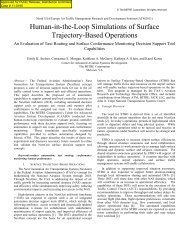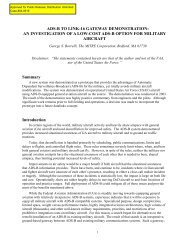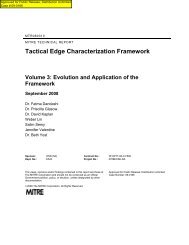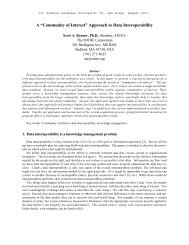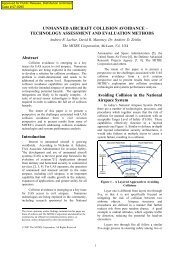Optimization of the Bandwidth of Electrically Small Planar Antennas
Optimization of the Bandwidth of Electrically Small Planar Antennas
Optimization of the Bandwidth of Electrically Small Planar Antennas
You also want an ePaper? Increase the reach of your titles
YUMPU automatically turns print PDFs into web optimized ePapers that Google loves.
Fig. 2 The 4-arm cylindrical folded helix antenna.<br />
© The MITRE Corporation. All rights reserved<br />
A number <strong>of</strong> 4-arm folded helices with different length to diameter ratios<br />
were studied. The ratio <strong>of</strong> <strong>the</strong> antenna Q to <strong>the</strong> lower bound (<strong>the</strong> Chu limit)<br />
<strong>of</strong> Equation 1 was calculated and compared against <strong>the</strong> Gustafsson limit for<br />
cylindrical shaped antennas [7]. This comparison is presented in Figure 3.<br />
Note that in calculating <strong>the</strong> Gustafsson limit presented in Figure 3, it was<br />
assumed that <strong>the</strong> antennas have a ka much less than 1, are purely vertically<br />
polarized and that <strong>the</strong> maximum achievable directivity is 1.5. In all cases,<br />
<strong>the</strong> Q <strong>of</strong> <strong>the</strong> antenna is above or at <strong>the</strong> Gustafsson limit.<br />
The objective <strong>of</strong> <strong>the</strong> present work is to perform a similar study for planar<br />
antennas as a function <strong>of</strong> <strong>the</strong>ir length-to-diameter ratio. We compare a<br />
number <strong>of</strong> different planar antennas, consider simple techniques to<br />
impedance match <strong>the</strong>m and <strong>the</strong>n compare <strong>the</strong>ir Q’s to <strong>the</strong> Gustafsson limit.


